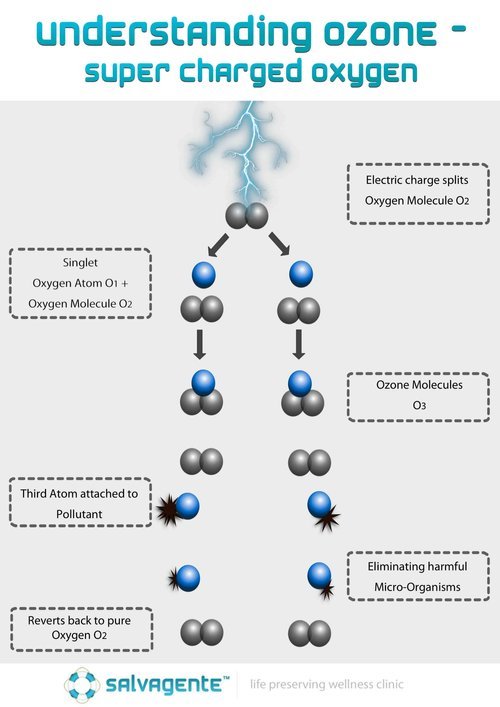Ozone Therapy for Lyme Disease
Ozone Therapy “stimulates the body’s antioxidant systems by offering a mild prooxidant challenge. The challenge is not enough to cause oxidant damage, but enough that the body increases its production of the enzymes: glutathione peroxidase, reductase, super oxide dismutase, and catalase, setting off a response where free radicals are swept away all over the body, even though the ozone may have introduced into only one area. Bacteria, viruses, and some types of unhealthy cells don’t have that same enzymatic protection from oxidation, so they are made non-viable, while human cells survive” (Sophia Health Institute).
Ozone can be done, most commonly through IV, but also applied topically, through drinking, etc. Two IV methods are Major Auto-Hemotherapy (MAH), in which blood is drawn from the patient, exposed to ozone and re-injected into the patient or Direct Intravenous Ozone Therapy (DIV), in which oxygen and ozone are directly infused into the patient’s bloodstream. DIV is recommended as the only way to eliminate an issue. It is safer and considered more effective.
Pros:
Ozone Therapy is considered very promising and not as long term as other options.
There is also another benefit that it is believed this treatment can help with heavy metal toxicity.
Cons:
Ozone Therapy is not considered standard medical practice by Western medicine but is widely accepted in Germany.
It is unlikely to have this covered by insurance.
Like all care, Ozone therapy can be dangerous if not done through a reputable doctor.
Sophia Health Institute. "Why Use Ozone Therapy? by Dr. Sarah Carnes - Sophia Health Institute." Sophia Health Institute, 31 Mar. 2015. Web. 13 July 2016.
The Content is not intended to be a substitute for professional medical advice, diagnosis, or treatment. Always seek the advice of your physician or other qualified health provider with any questions you may have regarding a medical condition.

